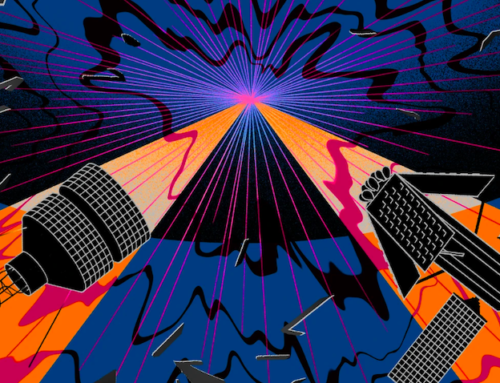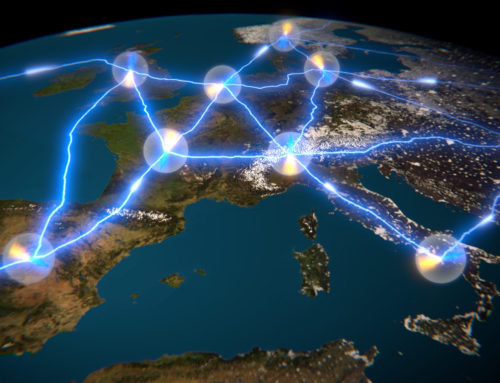What will a quantum network look like? How will it integrate with the current internet? Image Credit: Google
Alexander Vipond
A research team at the University of Delft in the Netherlands has laid out a roadmap for a quantum internet. Led by Stephanie Wehner, David Elkouss and Ronald Hanson, the trio have set out what is necessary to establish a quantum internet, how it will interact with the current internet, and where it could take us.
The researchers say a quantum internet is not designed to replace the current internet but complement it by offering various advantages.
These include much more secure remote access to the cloud, stronger security identification methods, secure messaging and more accurate time synchronization across devices. The capabilities of a quantum internet would grow as it develops through six stages (see the graphic below). A quantum internet is also capable of developing in parallel to quantum computers which are only necessary to reach its final stage.

The proposed levels to a full-fledged quantum internet. Image credit: Elkouss et al in Science, Vol. 362, Issue 6412.
The first stage in the process is to build a fast and reliable small network of nodes that can transmit and receive quantum entangled messages. This requires a physical channel to send the message such as a fiber optic cable, a quantum repeater capable of extending the distance information can be sent, and end nodes to receive the messages.
The Delft group is building such a network between four cities in the Netherlands and hopes to replicate the achievements of the ARPANET (the precursor to the modern internet) by sending the first message between Delft University and Amsterdam in 2020. Countries such as China have also been building first stage quantum networks such as the Beijing-Shanghai quantum link for security purposes.
In a world in which the privacy and security of the internet are rapidly eroding in the face of surveillance capitalism, aggressive state espionage, new technological challenges (such as AI and the Internet of Things) and economic incentivisation for speed over security, could a quantum internet act as a partial cure to such dire strategic trends?
The short answer is yes. By using near faultless quantum encryption there is an opportunity for small networks to regain the confidentiality and integrity of their information. The recent use of internet traffic rerouting and cloud hopping to conduct industrial espionage against Western countries including Australia and the United States could be mitigated by quantum secure remote access protocols and the use of quantum internets.
In the final stage of a quantum internet, the creation of quantum byzantine agreements could also help decentralised networks organise and share information safely even when there is a malicious actor hiding amongst them. This is because the arrangement of the system is resilient enough to accommodate up to a third of the actors in the system being bad whilst simultaneously allowing good actors verify their information and carry out their message.
The long answer is that this is a partial technical solution to two human problems. One, the age-old security problem of states stealing and sponsoring proxies to acquire knowledge from competitors. Using a quantum internet will raise the cost for attackers but it will not deter them as the geo-strategic or business imperatives (or a civil-military fusion of the two) for compromising communications will continue to drive their actions. If the stages of a quantum internet can grant increasingly absolute communications security, as it has been theorised to do, what is of a higher likelihood is that it will simply shift attackers’ attention to the humans on either end of the node.
Two, the new-age problem of structural deficiencies in internet security created by digital business models that require huge amounts of data and whose speed of technology iteration undermines the security of the flow of new technologies and infrastructure that fuel the internet’s expansion. The complexity of this problem cannot be answered by one technology and requires multiple solutions to be sought across government and industry.
In the darkness of the web there stands a path of light. The photons that entangle a quantum message, whilst not a silver bullet to problems of cybersecurity, can provide a much greater level of security than what we have now. The scientific and engineering challenges along the six stages will be difficult to surmount. However, by offering a unified approach across industries with a common plan, the Delft team have brought the possibility of a quantum internet several steps closer to being a new part of the web.
For a more in depth look at the future of a quantum internet, you can view Project Q’s interview with Stephanie Wehner here.
[wpvideo v1gfxCKg]







[…] may have heard of the work being done to build a quantum network in the Netherlands by a team of researchers at […]